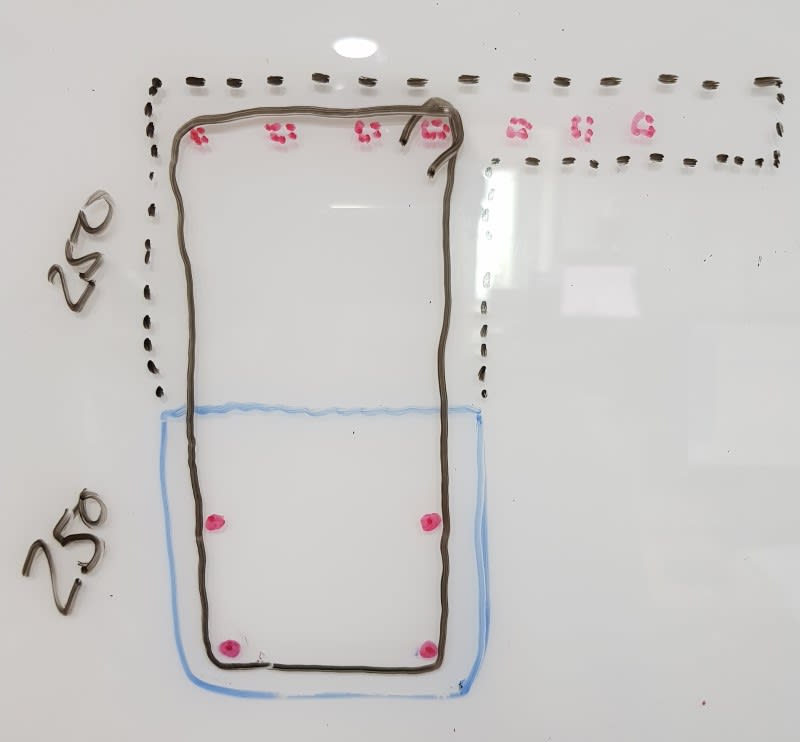Lomarandil
Structural
- Jun 10, 2014
- 1,912
This one is just off-the-wall enough that I'll feel more comfortable with some outside wisdom.
We're designing a building for phased construction. They're nearly complete with the second story now, and will return to add a third and fourth story once more funding is available (owner is on a shoestring budget). Concrete moment frame building, brick infill walls, tin roof, no seismic and really low wind. No prescribed building code, I default to ACI by habit but am open to others.
In the final configuration, it's a monolithic slab and beam floor system. (Two-way mild steel reinforced CIP)
In the meantime, we want to add two beams in the ceiling of the second story to be able to hide some water storage tanks. Not enough budget to build out the entire third floor slab right now. The rest of the second floor will be open to the tin roof above.
My thinking is to cast the bottom half of the beam now, with enough capacity to carry water tanks. In X years, the contractor can come back, roughen up the top surface, shore the beam and cast the rest with the future third floor slab. Thankfully, my final beam is 500mm deep, so I'm able to develop stirrups (smooth 8mm) on both sides of the interface.

A few questions:
[ol 1]
[li]If I cast in the future beam stirrups (with the top half protruding), they won't be engaging the current top bars (future mid bars) like a typical open stirrup does. In the immediate beam configuration, concrete capacity is adequate for shear (and no torsion). Later on, the t-beam will see torsion, so the stirrup will be closed around the future top bars. Is there any reason this isn't a good idea?[/li]
[li]Can I double dip on the required horizontal shear ties? For beams with sufficient concrete capacity to carry shear, I count provided torsion steel toward the minimum shear steel requirement. My reading of Ch. 17 makes me think the same is also valid here. Thoughts?[/li]
[li]Bonus: would the above question be different if using shear friction provisions?[/li]
[li]Does anyone know of a good corrosion protection solution that is easy enough to remove that I can be confident the future contractor will do so?[/li]
[li]Anything else that comes to mind I should be considering?[/li]
[/ol]
----
just call me Lo.
We're designing a building for phased construction. They're nearly complete with the second story now, and will return to add a third and fourth story once more funding is available (owner is on a shoestring budget). Concrete moment frame building, brick infill walls, tin roof, no seismic and really low wind. No prescribed building code, I default to ACI by habit but am open to others.
In the final configuration, it's a monolithic slab and beam floor system. (Two-way mild steel reinforced CIP)
In the meantime, we want to add two beams in the ceiling of the second story to be able to hide some water storage tanks. Not enough budget to build out the entire third floor slab right now. The rest of the second floor will be open to the tin roof above.
My thinking is to cast the bottom half of the beam now, with enough capacity to carry water tanks. In X years, the contractor can come back, roughen up the top surface, shore the beam and cast the rest with the future third floor slab. Thankfully, my final beam is 500mm deep, so I'm able to develop stirrups (smooth 8mm) on both sides of the interface.

A few questions:
[ol 1]
[li]If I cast in the future beam stirrups (with the top half protruding), they won't be engaging the current top bars (future mid bars) like a typical open stirrup does. In the immediate beam configuration, concrete capacity is adequate for shear (and no torsion). Later on, the t-beam will see torsion, so the stirrup will be closed around the future top bars. Is there any reason this isn't a good idea?[/li]
[li]Can I double dip on the required horizontal shear ties? For beams with sufficient concrete capacity to carry shear, I count provided torsion steel toward the minimum shear steel requirement. My reading of Ch. 17 makes me think the same is also valid here. Thoughts?[/li]
[li]Bonus: would the above question be different if using shear friction provisions?[/li]
[li]Does anyone know of a good corrosion protection solution that is easy enough to remove that I can be confident the future contractor will do so?[/li]
[li]Anything else that comes to mind I should be considering?[/li]
[/ol]
----
just call me Lo.
